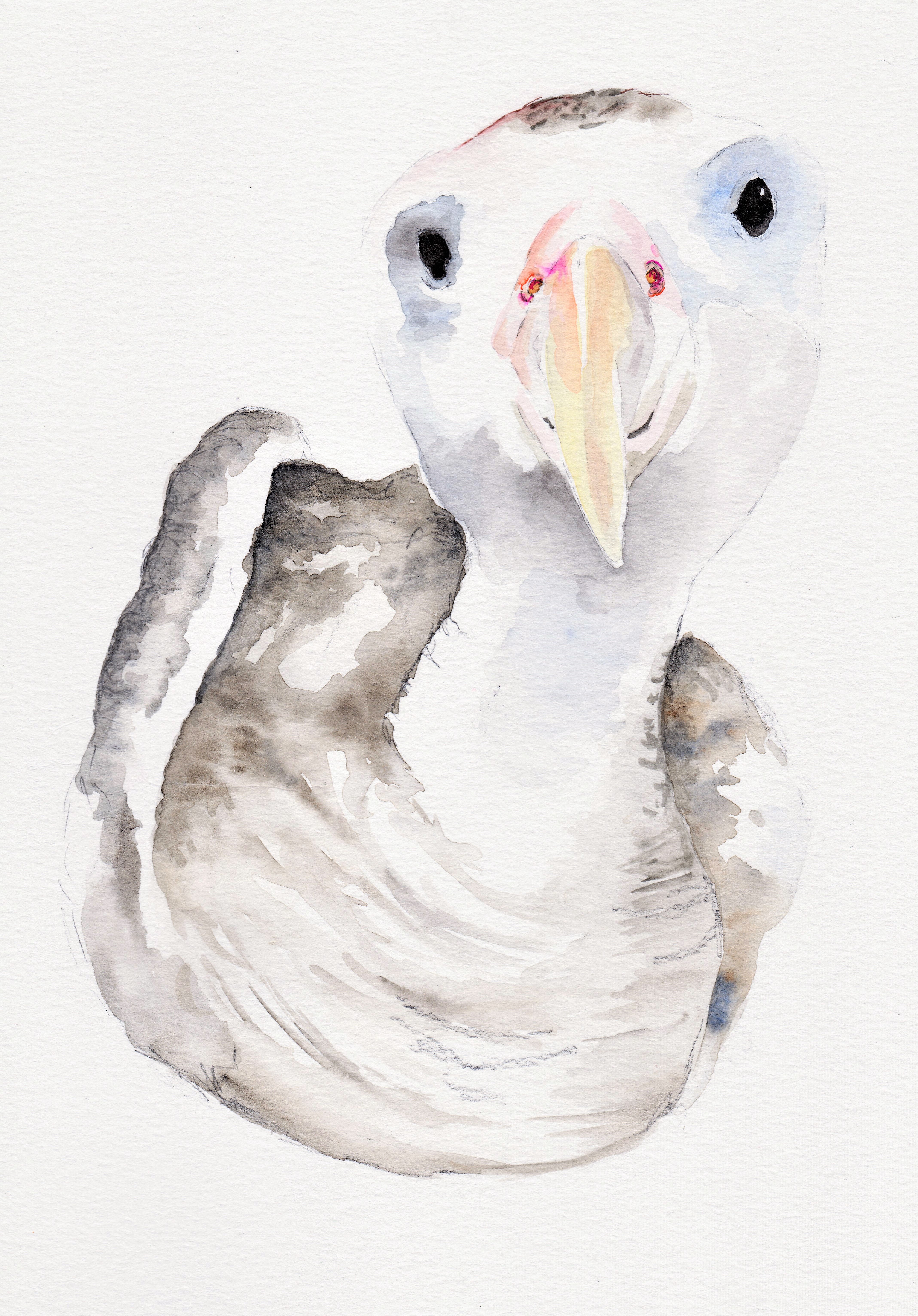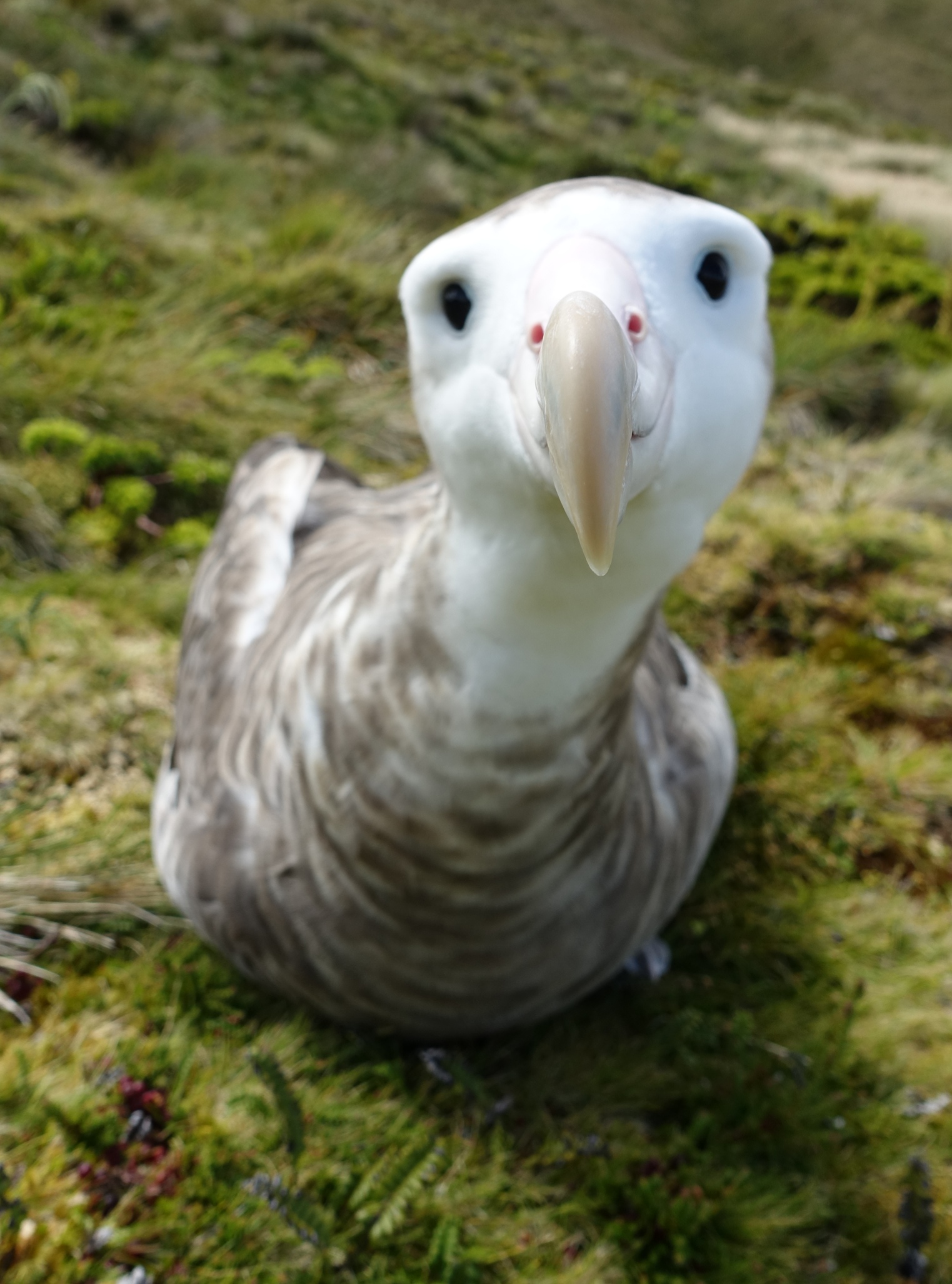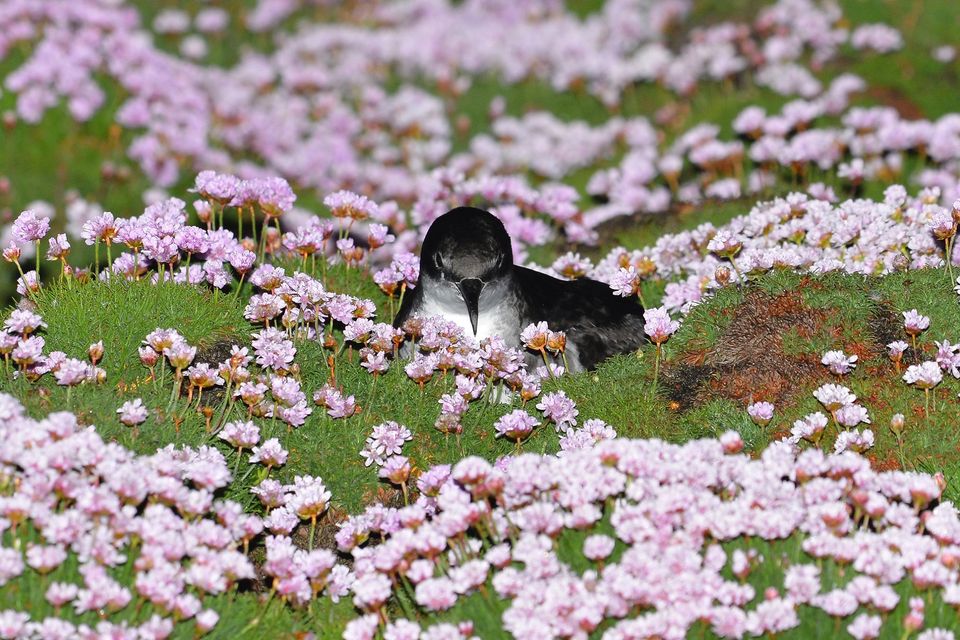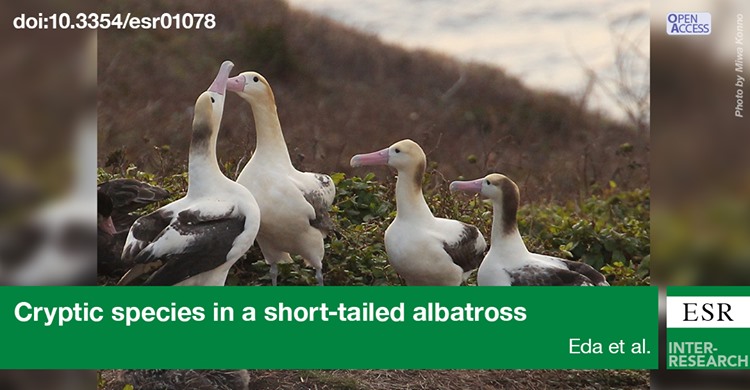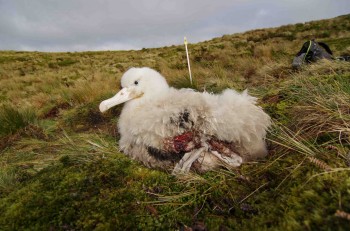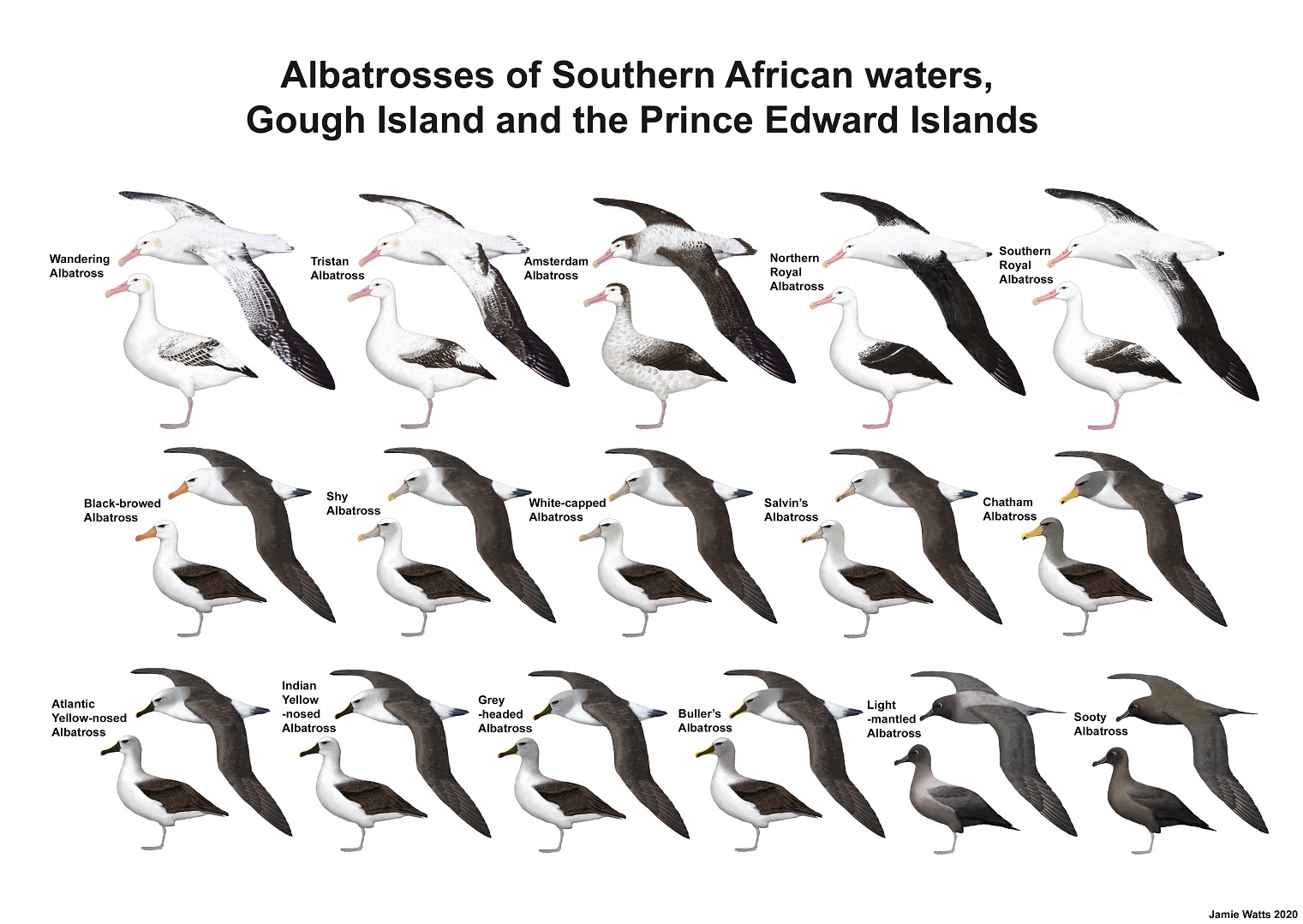
The albatrosses of southern Africa, Gough and the Prince Edward Islands
Following on from his poster depicting the albatrosses of New Zealand, illustrator Jamie Watts has produced another in his albatross series. This time he has painted the 16 species recorded at sea in the waters of southern Africa (Namibia and South Africa) as well as those that breed or have been recorded as vagrants on Marion and Prince Edward Islands in the southern Indian Ocean and Gough Island in the South Atlantic. The adult birds are illustrated standing and in flight.
The 16 species were chosen following the coverage of albatrosses in Peter Ryan’s Guide to Seabirds of Southern Africa (click here for the ACAP Latest News review).
Jamie’s albatross posters (and his others including of penguins and marine mammals) are available for purchase from JamieWattsArt in two size options (50 x 70 cm and 61 x 91 cm). They are professionally printed on high-quality A3 satin matt photo paper from 12 to 20-megapixel, hand-produced originals and are mailed in a tube.
Click here for a list of all 22 species of albatrosses with links to their global threatened status.
With grateful thanks to Jamie Watts, who is kindly allowing his posters to help promote this and next years’ World Albatross Day, held on 19 June.
Reference:
Ryan P.[G.] 2017. Guide to Seabirds of Southern Africa. Cape Town: Struik Nature. 160 pp.
John Cooper, ACAP Information Officer, 30 November 2020

 English
English  Français
Français  Español
Español 